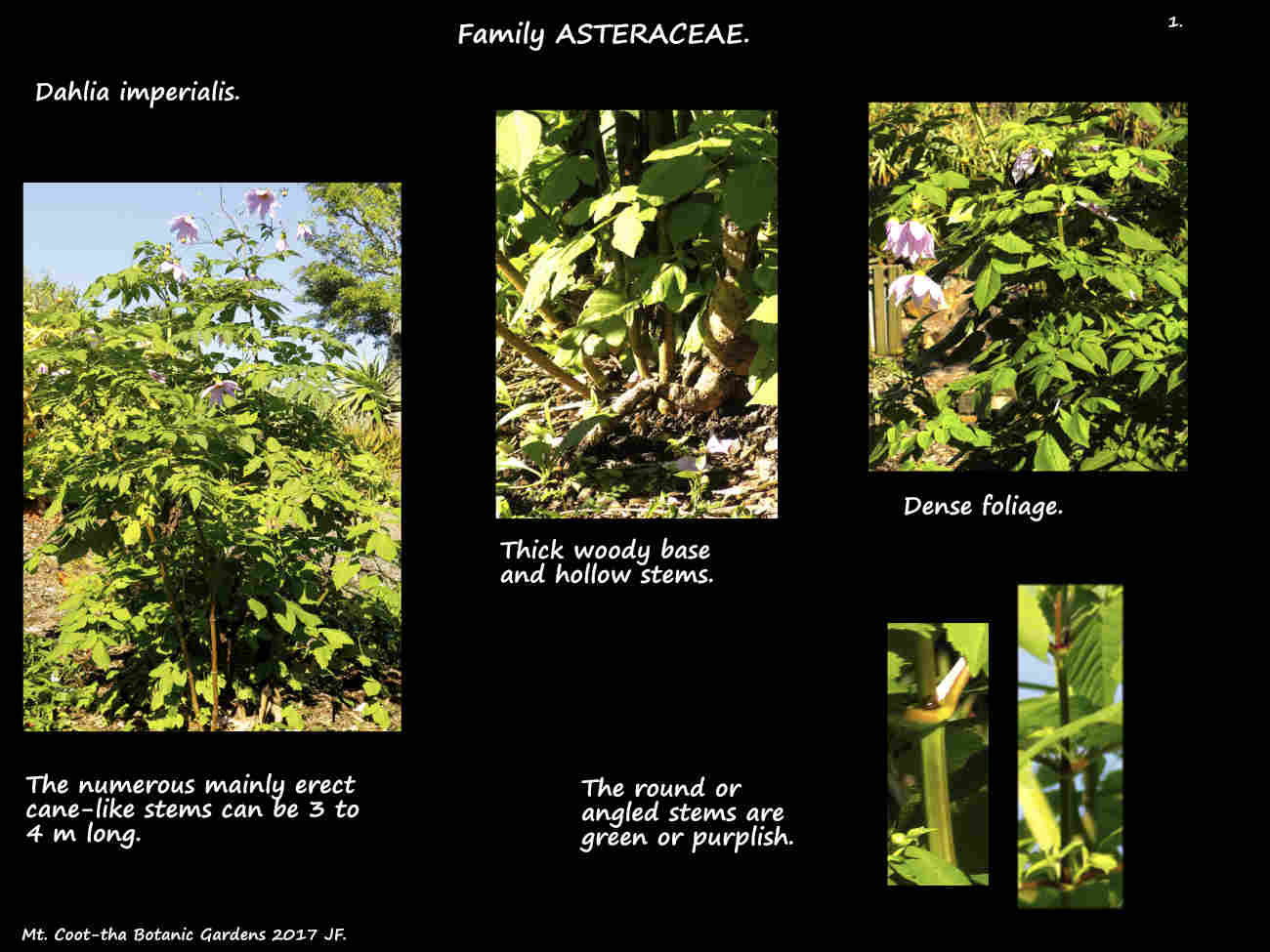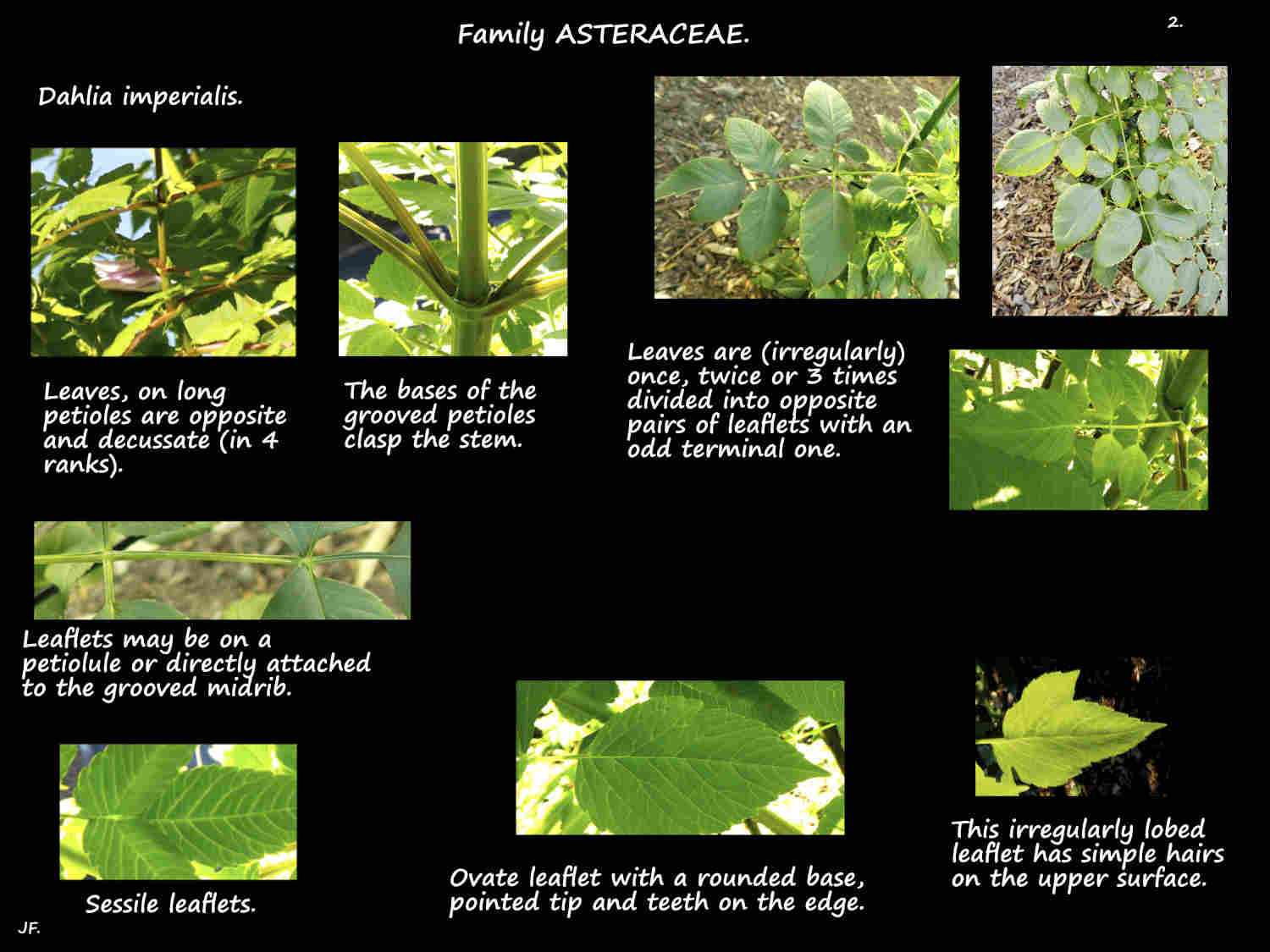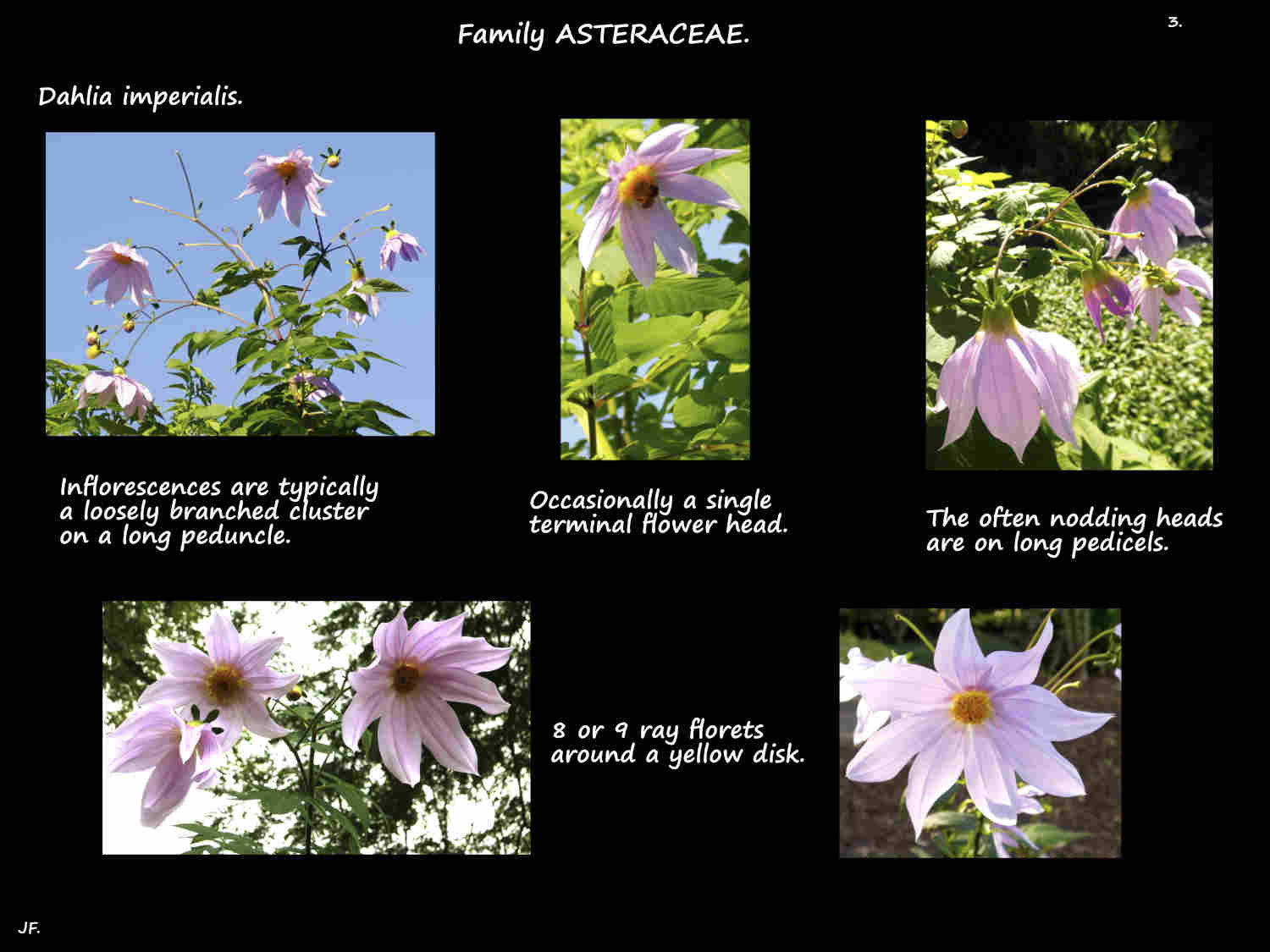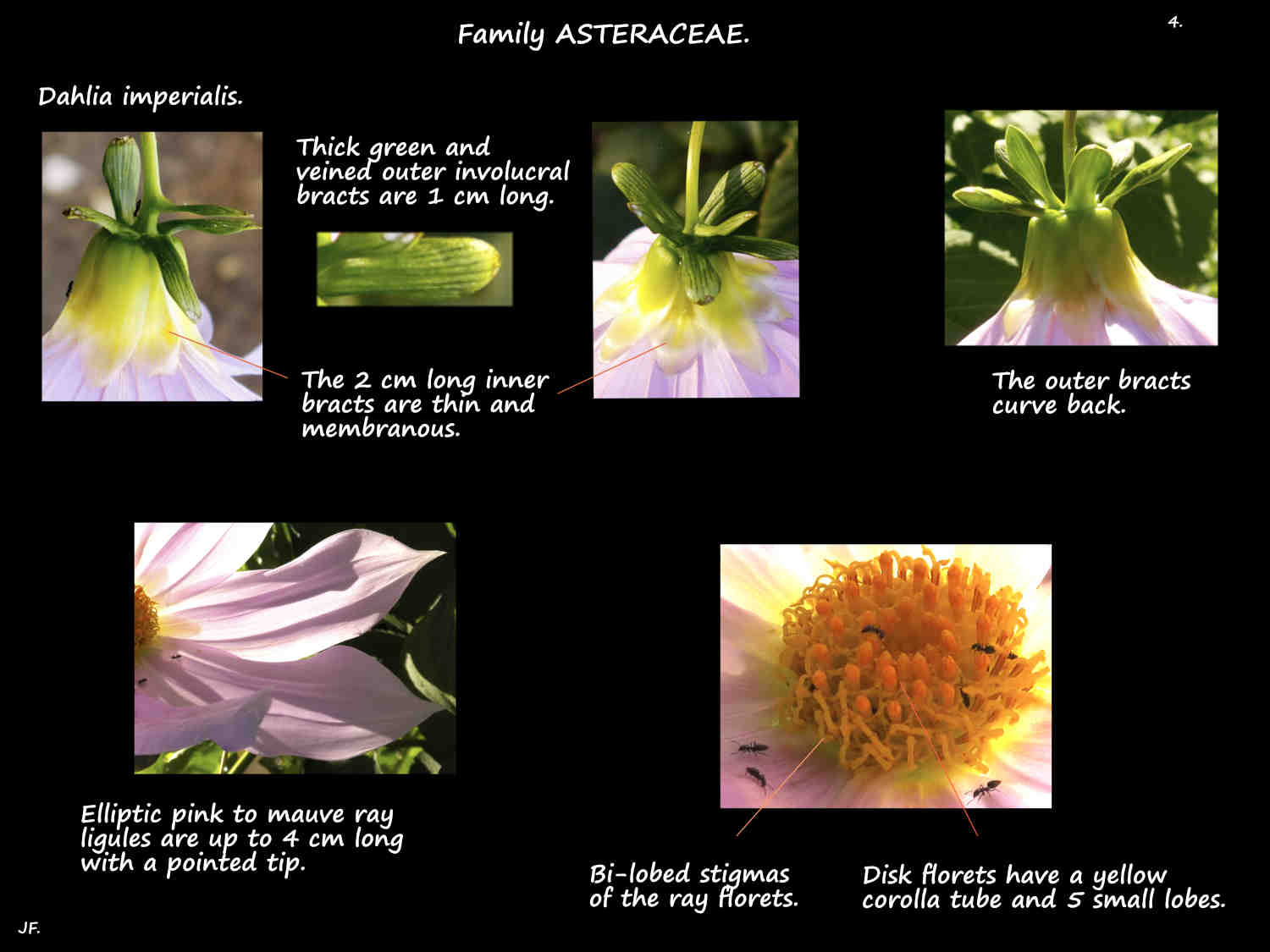Dahlia imperialis.
The Tree dahlia, naturalised in a few areas in Queensland is one of 4 similar species.
They have hollow cane-like often unbranched stems that may become woody.
The erect to slightly arching stems can be from 2 m up to 4.5 m (or more) long.
The oppositely arranged leaves, on a petiole are pinnate, bi- or tri-pinnate but sometimes irregularly so.
Up to 35 cm long the midrib has opposite, or roughly opposite pairs of leaflets and an odd terminal one.
The ovate leaflets, with or without a petiolule, have a pointed tip and toothed edge.
There are simple hairs on the upper surface and on the midrib and veins underneath.
Terminal inflorescences, on a long peduncle are a loosely branched cluster.
Each flower head is on a long pedicel with a leafy bract at the base.
Heads, up to 15 cm across have both ray and disk florets.
There are 2 whorls of bracts or phyllaries in the involucre.
The outer thick oblong green bracts, around 1 cm long have a rounded tip.
The dark green veins running down them may branch near the tip.
The wide ovate bracts in the inner whorl are around 2 cm long.
The base is yellowish-green and the thin membranous edges and tip are whitish.
They have a few darker green veins.
The around 8 or 9 overlapping ray florets are in one whorl.
The end of the 3 to 4 cm long elliptic ligule narrows to a point with a mucro (tiny abrupt point).
The rays are a pale pinkish-purple.
The bisexual disk florets have a yellow corolla tube with 5 small lobes.
Anthers of the 5 stamens are fused into a tube.
The style, from the inferior ovary passes through the anther tube and divides into 2 yellow stigmatic lobes.
J.F.






